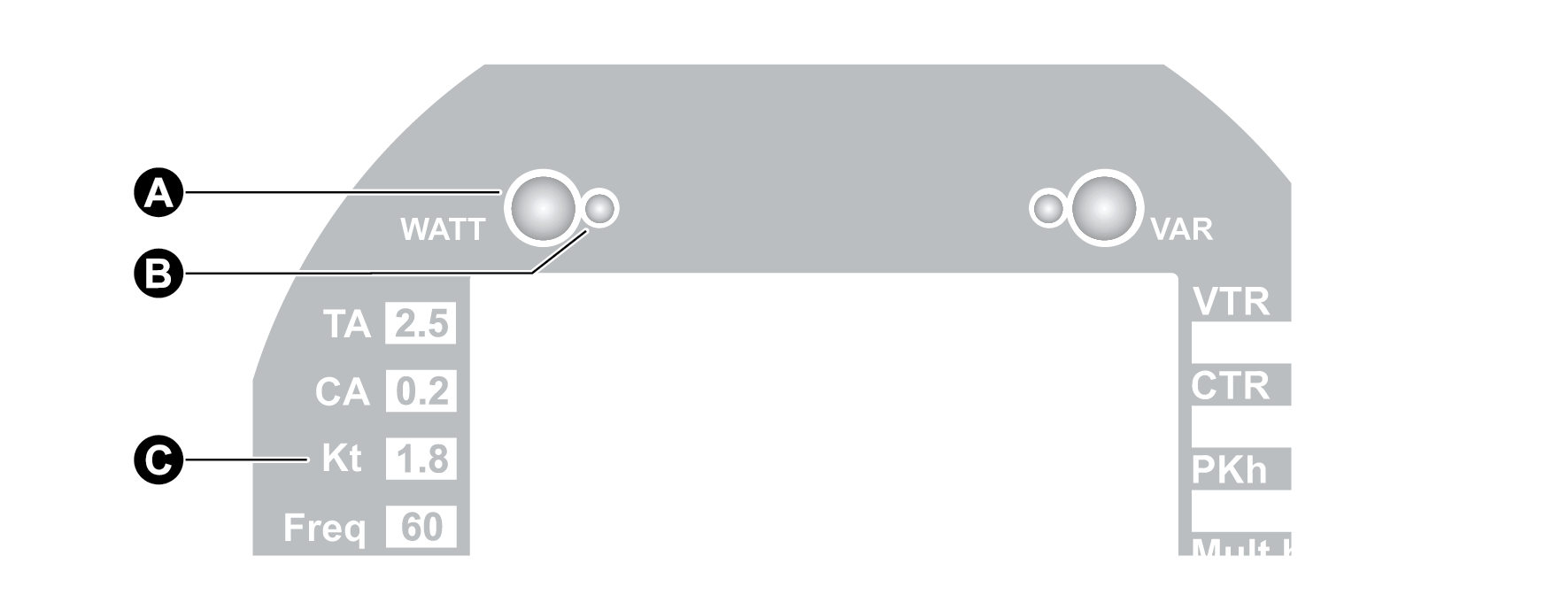Energy pulsing with LEDs
The two LEDs on the front panel are preconfigured for energy pulsing. The adjacent smaller infrared outputs are connected to the LEDs and pulse at the same rate.
The pulse rate of the LEDs can be adjusted by modifying the Kt setup register in the associated Calibration Pulser module. The value entered defines how much energy the module accumulates before a pulse is sent to the hardware channel. The front panel WATT and VAR LEDs are factory set to the same pulse rate. The Kt value is shown on your meter’s front panel label; the default setting for Kt depends on the form factor of your meter.

|
A |
Infrared pulsers |
|
B |
LED pulse indicator |
|
C |
Kt value for the meter |

WATT – LED and VAR – LED
The WATT – LED is controlled by a Calibration Pulser module that has its Source input linked to the kW del+rec output of the Arithmetic module labeled “KW del, rec”.
The VAR – LED is controlled by a Calibration Pulser module that has its Source input linked to the kVAR del+rec output of the Arithmetic module labeled “kVAR del, rec".
- For meters with 9S, 36S and 29S form factors, the default pulse rate of the front panel WATT LED is 1.8 (1.8 Watt-hours per pulse). The kt value of the VAR LED is also 1.8.
- For Form Factor 35S meters, the default pulse rate of the front panel WATT LED is set at 1.2 (1.2 Watt-hours per pulse). The Kt value for the VAR LED is also 1.2.
Customizing energy pulsing
Changing the value for the Kt setup register of the associated Calibration Pulser module lets you modify the pulsing rate of either channel. If you want to configure the LED port for a different pulsing application, you must re-link the Source input to the output register of a different instantaneous power quantity in one of the Arithmetic modules. Ensure that the quantity you select originates from the MU (meter units) Power Meter module.